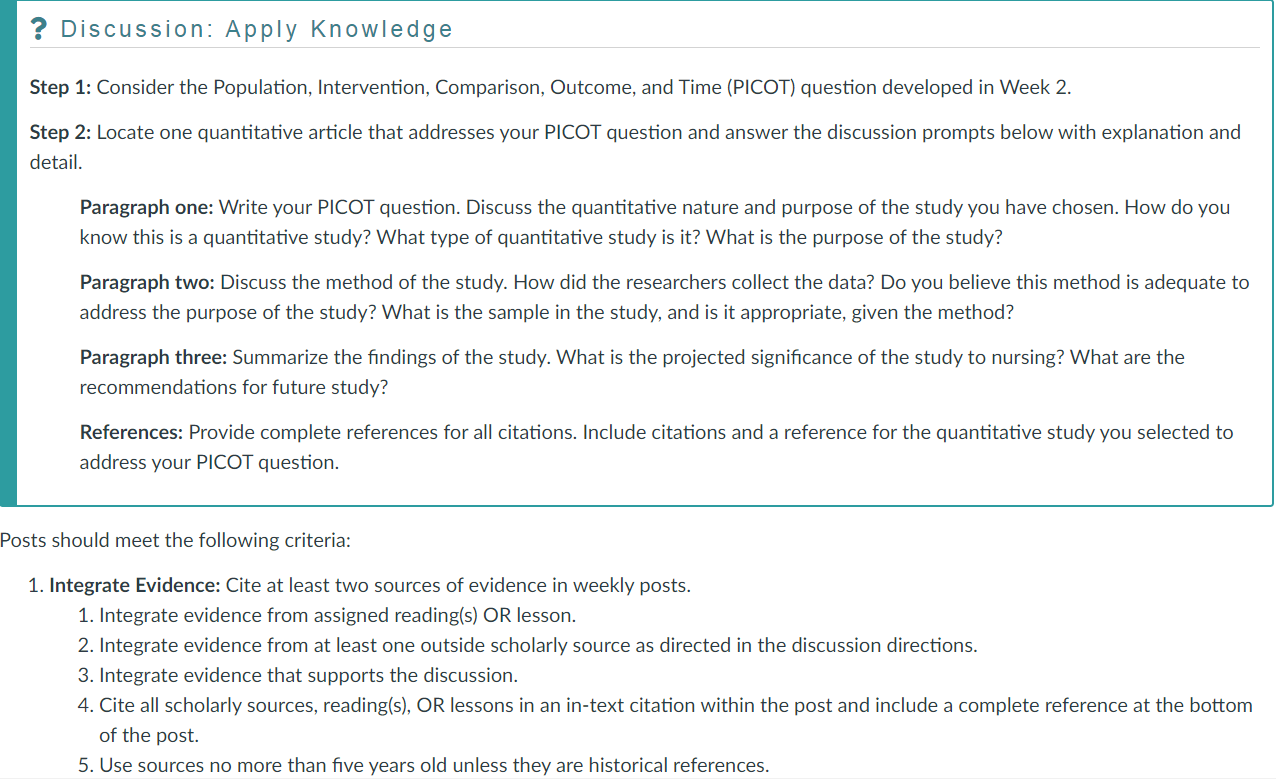COURSE:
NR439: RN Evidence-Based Practice
Discussion: Quantitative Research
Step 1: Consider the Population, Intervention, Comparison, Outcome, and Time (PICOT) question developed in Week 2.
Step 2: Locate one quantitative article that addresses your PICOT question and answer the discussion prompts below with explanation and detail.
Paragraph one: Write your PICOT question. Discuss the quantitative nature and purpose of the study you have chosen. How do you know this is a quantitative study? What type of quantitative study is it? What is the purpose of the study?
Paragraph two: Discuss the method of the study. How did the researchers collect the data? Do you believe this method is adequate to address the purpose of the study? What is the sample in the study, and is it appropriate, given the method?
Paragraph three: Summarize the findings of the study. What is the projected significance of the study to nursing? What are the recommendations for future study?
References: Provide complete references for all citations. Include citations and a reference for the quantitative study you selected to address your PICOT question.
Posts should meet the following criteria:
- Integrate Evidence: Cite at least two sources of evidence in weekly posts.
- Integrate evidence from assigned reading(s) OR lesson.
- Integrate evidence from at least one outside scholarly source as directed in the discussion directions.
- Integrate evidence that supports the discussion.
- Cite all scholarly sources, reading(s), OR lessons in an in-text citation within the post and include a complete reference at the bottom of the post.
- Use sources no more than five years old unless they are historical references.
SOLUTION
Hello professor and class,
Paragraph One
The PICOT question guiding this discussion is: In elderly patients (P), how does a pharmacist-led medication review (I) compared to standard care (C) affect the rate of medication errors (O) within six months (T)? The study to answer this question is a randomized controlled trial (RCT) conducted by Kovacs et al. (2022) which investigates the effect of pharmacist-led medication reviews on medication errors in elderly patients. The study is quantitative because it assesses medication error rates and uses statistics to compare the results pre- and post-intervention. The study is an RCT which is a robust quantitative design in as much as its ability to randomly……………………………………..purchase solution at $5

Reviews
There are no reviews yet.